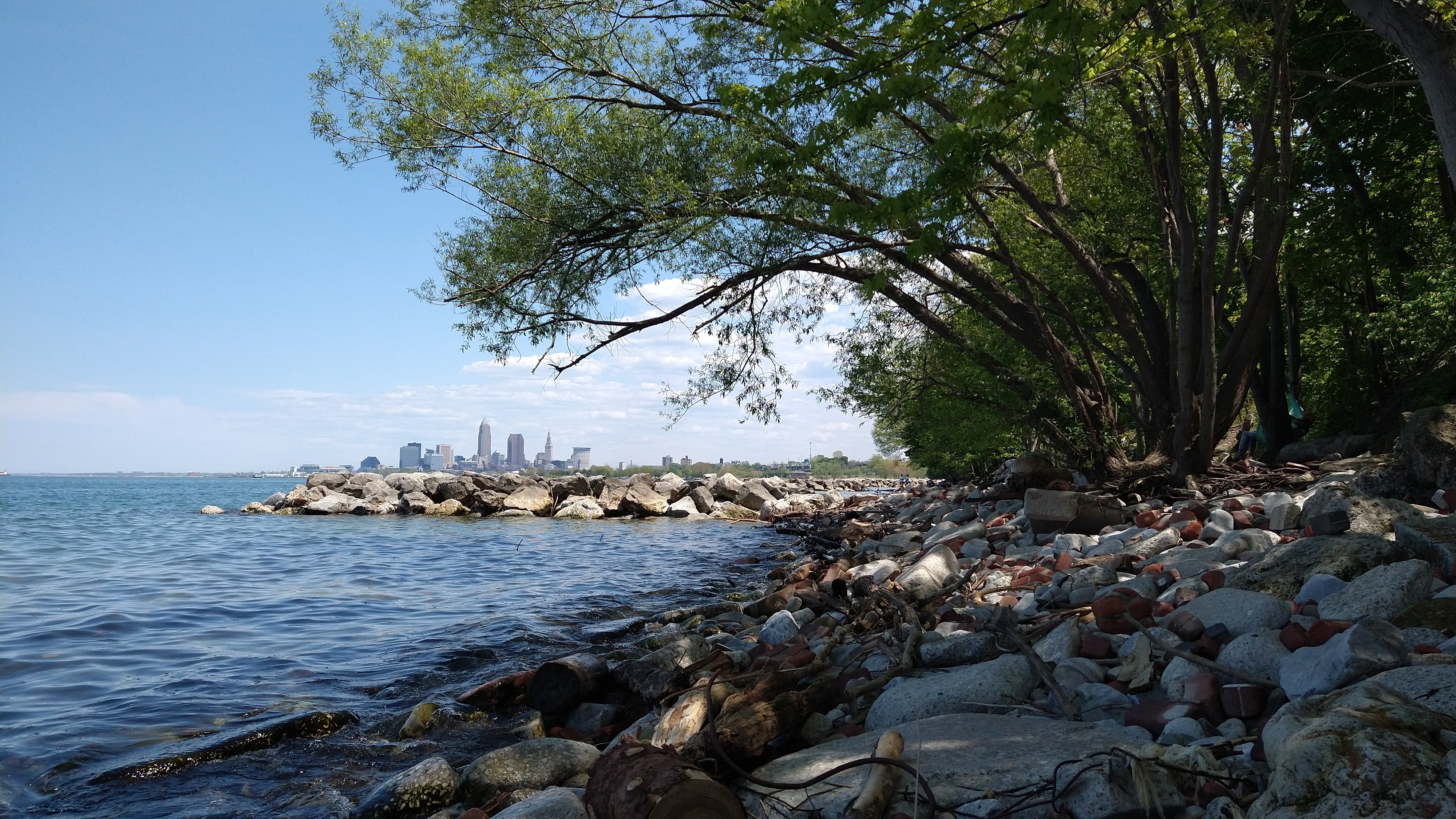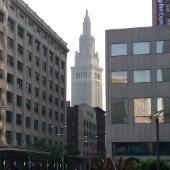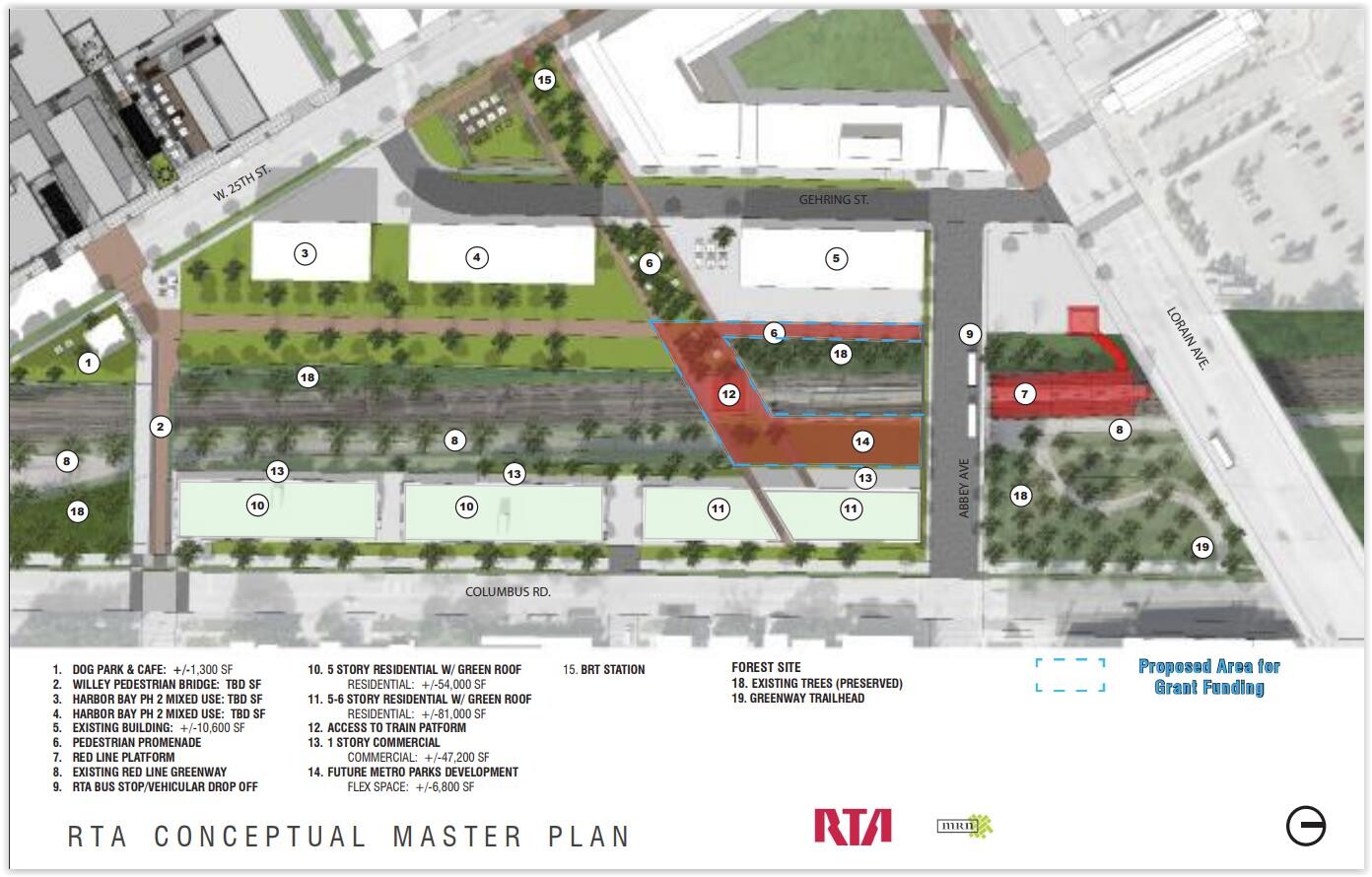
Everything posted by Ethan
-
The Future of America and Its Cities
I agree with most of this, though I think the transition away from personal ownership of cars will be slower, even once self driving cars become the norm. What I think is more likely, particularly in the short term, is that the average number of cars per household decreases dramatically. There will be far fewer households with 3+ cars. There will be few teenagers with cars, and dual commuting households might be able to get away with one car if their schedules are sufficiently different, or if one's commute is sufficiently short to make rental practical. Commuting, combined with Americans predilection for self-reliance, is also why I'm skeptical of car ownership going away. Rental models don't work well when everyone wants to rent at the same time. There's also some interesting options with algorithms/AI for self driving cars to become public transportation. Share taxis are a common form of transportation in poorer parts of the world, and an AI or algorithm could plot routes that allow for continuously picking up and dropping people off with minimal inconvenience to the passengers. It's basically a smaller, more flexible, and more direct bus at that point. I'd be more worried about how this might impact buses than rail. Parking reduction though is a real possibility, and something that is worth getting excited about, even if it isn't the perfect urbanist solution.
-
Cleveland: Retail News
Fully agree, I'd rather have unique than chains. That said, if I do think of pretty much any of truly vibrant city/downtown they also have chains. I think the point is that they are a healthy part of any retail ecosystem. We shouldn't be seeking out chains at the expense of local retailers, but we shouldn't be driving them away either, and their absence generally isn't a good sign.
-
Cleveland Metroparks: The Emerald Necklace
Here is a copy of the draft plan for the Esther & Nathan Rzepka Park the Metroparks is going to build out in South Chagrin Reservation. Sorry it's a bit grainy. The meeting to discuss and provide feedback is tonight from 5:30 to 7:00 if anyone is interested. Feedback can be provided at the link below. https://www.clevelandmetroparks.com/about/planning-design/reservation-plan-updates
-
University Heights: Development and News
^ And it's been announced! I'm excited, this sounds awesome! Urban Air Adventure Park to open in former University Square in 2025 The 58,000-square-foot home of After Tops Friendly Markets’ location at University Square has sat vacant since it closed in 2006. Now, nearly two decades later, life will breeze back into the space at the future Bell Tower Center with an Urban Air Adventure Park spot. The indoor adventure and trampoline park is expected to open in late summer or early fall of 2025 and will be the fourth Northeast Ohio location — but the only one on the east side.... https://www.crainscleveland.com/real-estate/urban-air-adventure-park-open-bell-tower-center
-
Cleveland SC Soccer Stadium
Fun, and hope so, but I'm not putting that much faith in an anonymous burner reddit account.
-
Cleveland: Downtown: Tower City / Riverview Development
While this technically doesn't matter since it's outside of the scope being discussed, I find it interesting that the massing at W3rd and Stones Levee has changed between the two most recent design review meetings. Previous: Most recent: Again, this is out of scope, so it technically doesn't matter, but the easiest thing would have been to copy/paste, leaving this massing unchanged. For some reason, someone gave this some thought. Maybe that means something is coming sooner than later, or maybe it means absolutely nothing. They could just be acknowledging the current parking lot, it could be a planned plaza, there are infinite explanations, like I said it's interesting, and if this isn't the place to post random speculation, where is?
-
Cleveland: Retail News
This was my experience as well, more or less. While it was really nice being able to walk to get groceries, the premium I was paying in doing so just wasn't worth it for anything beyond quick top up runs. I don't know why it is so much more expensive, but it is. Higher taxes/rents, inefficiencies compared to other big box stores, it's probably several factors, I don't know, but I do know that if you're living downtown, and you have a car, the rational decision is still to buy your groceries outside of downtown. I'd be curious to know the reason why prices are higher. If it's taxes/rents, policy changes could make a difference, but if it's inefficiency from historic downtown buildings, lack of loading bays, etc, it's not really a problem that can easily be addressed by policy. It could also be something else entirely. Maybe we just need an Aldi to open up downtown, while I'm guessing it would still be cheaper than a traditional Aldi, maybe it wouldn't be quite as egregious as starting with what is already a higher end grocery store. I'm guessing there's a reason though that it seems like only higher end grocery stores open up in denser neighborhoods. Lots of questions.
-
Cleveland / Northeast Ohio: "What If/Hypothetical/Dream" Construction and Projects Discussion
Cleveland should absolutely try to build itself up as a city, but any climate based migration is a long way off, and won't be a surprise if/when it finally does come. As long as smart people are willing to bet multiple millions of dollars on buildings and infrastructure designed to last decades in sun belt cities, we are still a long time off from needing to worry about a large climate driven migration. Even when driven by humans, climate is still very slow moving. To avoid going too far off topic. I was thinking about the building over red line stations idea, and possible other contenders besides Ohio City. Little Italy seems like the only place with enough demand/high enough rents to justify it. It would be a very difficult build, but the benefit might be enough to offset the cost. (I suppose if not it could also just build over the nearby parking lot, but that's less fun). Truly a great location though, right on the edge of Little Italy and University Circle.
-
Cleveland / Northeast Ohio: "What If/Hypothetical/Dream" Construction and Projects Discussion
Agreed, this presentation should get much more love than it is. Great job! I like the observation deck idea as well. The bridge is probably beyond saving, but repurposing it into a static structure must be at least more feasible. Whether or not that moves it into the realm of the possible, I have no idea, but it's a good idea, and I hope it's studied. An infill station on Columbus peninsula is also a good idea, obviously as bit trickier than your average station, but many such buildings/stations already exist. A ~W44th infill would also be really useful and would play well with your Lorain Ave proposals.
-
Cleveland: Downtown: Huntington Bank Field
Unfortunately basically every Browns fan I've talked to irl is excited about the possibility of a dome at Brook Park. I think they'll be disappointed when they're still paying enormous amounts for parking, except then they'll be nothing around to do. (With the possible exception of a small Jimmy's world). As long as it's not being paid for with public funds though I'm fine with it. The Browns will survive, and I'm sure Cleveland can find better uses for downtown lakefront land.
-
Cleveland Hopkins International Airport
I disagree. A positive impression from the airport isn't worth that much, and I think people tend to separate the airport from the city in their impression. Also most very negative impressions are going to come from the airport being unclean, or TSA/security. We don't need a 3 billion renovation to keep the airport clean, and security and TSA can be an awful experience at every airport. Most governments and government agencies don't think about money nearly enough. How much do we think this 3 billion dollar renovation will increase average ticket costs? Airlines don't/won't/can't pay for it, so it gets passed on to the customers. What dollar value average increase in ticket prices is this expansion worth? Clearly the answer is between zero and infinity. I'd like to see an analysis for this question. My gut is starting to say it might be too high, but I'd love to get an estimate from a more informed person than myself. Cleveland tends to do fine on impressions once people get to Ohio City or similar neighborhood. As a resident who likes traveling I'd rather not spend more on every ticket so we can have a snazzier airport to be proud of.
-
Cleveland Hopkins International Airport
Perhaps we should scrap it entirely? The airport is basically fine. Sure it could be better, but a smart investment at 1 billion may very well be a boondoggle at 3 billion. And if these costs are basically just going to get passed on to the passengers through ticket pricing I'd rather have a functional, bare bones, affordable airport than an expensive one with all the bells and whistles. I'm not an expert, so take it with a grain of salt but 3x is huge increase, so scrapping it entirely seems like it should be on the table.
-
Cleveland: Downtown: Tower City / Riverview Development
-
Cleveland / Northeast Ohio: "What If/Hypothetical/Dream" Construction and Projects Discussion
While I'm sure they could always be doing more, the below plan for the W25th and Lorain area seems to be movement in that direction.
-
Cleveland Heights: Development and News
Not much exterior work on Lee Meadowbrook apartments lately. But they've been working on the inside.
-
Cleveland Brewery / Beer / Alcohol News
Another nice piece on Cleveland Whiskey in Crains. The tone is positive, but there's a bit of bittersweet news in there, at least to me. The restaurant portion isn't set to open for "many years" and "there’s no hard timeline in place." Which isn't as soon as I'd hoped. The owner also floats the idea of being acquired by one of the "big guys" which makes business sense, but would seem a bit disappointing to me. https://www.crainscleveland.com/manufacturing/cleveland-whiskey-has-big-plans-its-new-flats-south-bank-campus
-
Cleveland / Northeast Ohio: "What If/Hypothetical/Dream" Construction and Projects Discussion
To the extent GCRTA tries to promote density around transit. I hope they recognize that buses are not equal to rail. While it's admirable to also promote density around popular, successful, high-frequency bus routes, this shouldn't be given anywhere near the same effort as promoting density near rail. A bus that runs every 15 minutes doesn't have the same TOD potential as a train that runs every 15 minutes. All of our trains (with the possible exception of the green line) should be running at more than 15 minute intervals, but that is another issue. Was this a proposal? When, and do you a link? I would think Lee is a better North South road for BRT, much more consistently urban form up and down the street, but I haven't studied it or anything like that.
-
Cleveland: Downtown: East 4th Street Developments
Interesting, E4th is on the linked map of DORAs, while Cedar-Lee, which opened last Friday is not.
-
Cleveland / Northeast Ohio: "What If/Hypothetical/Dream" Construction and Projects Discussion
Basically agree, but Van Aken is actually a good example of the point I was making. On top of being a pretty nice area already, they added a significant attraction in the food hall. The transit stop is the cherry on top of what would be a very nice and successful development area without it. (It also isn't relying on transit for people to get there as it also has plenty of free parking). The transit connection in Van Aken isn't the star, it's an afterthought. I'm not saying that's good, just that the objective needs to be to make a nice urban node irrespective of whether or not it's well connected to transit. That the transit itself won't be enough to draw people or development is really my only point. But add a simple attraction or good anchor tenant and there's a chance it'll take off like hotcakes.
-
Cleveland / Northeast Ohio: "What If/Hypothetical/Dream" Construction and Projects Discussion
There's definitely truth to this, but much of this cost increase is self imposed. Environmental review for instance has gotten ridiculous sometimes costing millions of dollars just by itself. With political will and governmental competence much of this could be undone or at least simplified. This is actually one of the few issues I can relatively easily see getting bipartisan agreement on, so I don't think it's inconceivable. It would just take the right combination of gumption and competence.
-
Cleveland: Scranton Peninsula: Development and News
I don't know one way or the other, but I wouldn't be surprised if it would actually be cheaper to build a new bridge at this point than to refurbish the old non-maintained bridge. This is even more likely to be true by the time this becomes a busy area. Ignoring the money side of it, obviously it would be cooler to save and reuse the existing bridge.
-
Cleveland / Northeast Ohio: "What If/Hypothetical/Dream" Construction and Projects Discussion
The difference is that the red line is an abandoned freight rail line that generally speaking doesn't run in the right locations. I think people on this forum generally tend to overstate the power/desirability of TOD. It isn't the magic pill we'd like it to be. If you put a somewhat high frequency transit stop in a not too desirable area, you have a not too desirable area with a transit stop. It's helpful, but it's just one thing. Most redline stops that have thrived have at least one other thing going for them (airport, WSM, little Italy, Case, etc). The same thing wouldn't happen with a Euclid subway because it doesn't have the same problem. It's running through the right area, public square, playhouse square, CSU, midtown, CC, Case, UC, and I'd probably end it at Little Italy. The worst stops would be the 2-3 in midtown, but that area is already starting to turn around with a fancy bus pretending to be rapid transit. (Plus it has real attractions apart from potential housing Children's museum, Dunham Tavern, several concert venues, etc). True rapid transit could give it that last little boost to get over the hump and really develop.
-
Cleveland: Hotel Development
Most officially announced large projects don't make it to the finish line. That's to say nothing of projects still in the unofficial stage. I don't doubt the info, but the batting average of projects in this stage isn't great. I'd love a skyline changing hotel though, so hopefully this one achieves mixed sports metaphor success!
-
Cleveland: Downtown: Ten60 Bolivar Apartments
The Grays Armory building/museum is wildly underappreciated. It's a gorgeous building, unfortunately it's rarely open to the public. Hopefully with a few more residents in the area this can get a bit more love and maybe more events/better hours.
-
Cleveland: Downtown: East 4th Street Developments
If I remember correctly they did the same with public square, then ended up with very normal looking bollards. They should skip the first step and just put in normal looking bollards, exactly the same ones as were used at Public Square would be perfect. No need to reinvent the wheel.















